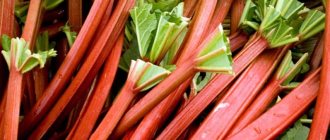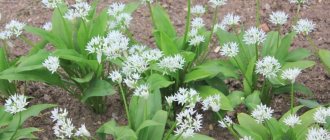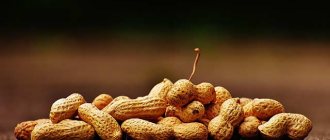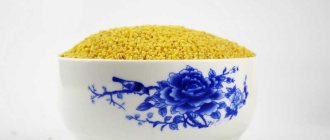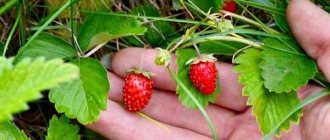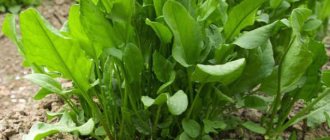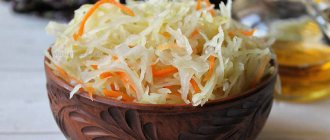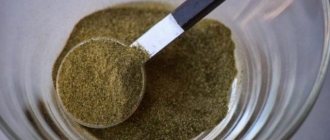What does quinoa grass look like?
The grass belongs to the Chenopoaceae family and is often associated with a weed. Quinoa is used as a natural medicine or as a vegetable. It is a wild and garden plant distributed throughout the world. The beneficial properties of the herb have been known since ancient times. The unpretentious plant is also called “white pigweed”. For medicinal purposes, the ground parts are usually used:
- leaves;
- stem;
- flowers.
Attention! The external characteristics of quinoa are determined by the subspecies of the plant. The herb is more often used for gastronomic purposes in Australia and the USA.
There is an opinion that wild plants helped people survive hunger during the siege of Leningrad
Chemical composition of quinoa
The beneficial properties of the herb are due to a set of the following chemical compounds:
- routine;
- potassium;
- organic acids;
- protein;
- proteins;
- pectin;
- calcium, magnesium, phosphorus, sodium;
- zinc, manganese, copper, iron;
- vegetable fiber;
- fats;
- vitamins P, E, C and PP;
- saponins;
- essential oils.
Attention! The healing properties of quinoa herb have been proven through scientific research. In terms of the amount of protein, young shoots are equal to meat; the plant must be included in the diet of vegetarians.
The presence of 17 essential amino acids that the human body does not produce is essential. Among the rarest compounds found in plant sources are:
- valine;
- isoleucine;
- leucine
Important! The energy value of a garden plant is 368 kcal (per 100 g). The creatinine contained in quinoa takes part in recovery processes.
Indications for use for medicinal purposes
For problems with the liver and spleen, take an infusion of seeds 1/4 cup 4 times a day. Atriplex tincture is taken for coughs, pulmonary tuberculosis, duodenal ulcers, and flatulence. The medicine has a positive effect on severe and prolonged headaches, hysteria, and neurosis. In ancient times, the herb was used even for paralysis - a description of the use of its beneficial properties has been preserved.
The plant contains essential oils, carotene, saponins, many organic acids and minerals. It has anti-inflammatory, soothing and expectorant effects, wound healing properties, due to which it is used for skin diseases.
Diseases for which quinoa is recommended
Medicinal properties of the herb:
- treats ulcers, wounds and inflammations on the skin;
- helps normalize the functioning of the digestive tract;
- reduces stomach cramps;
- has bactericidal properties;
- has an analgesic and sedative effect;
- improves kidney health;
- strengthens the cardiovascular system;
- increases immunity;
- cleanses the blood;
- prevents some types of cancer and chronic diseases.
Useful properties of quinoa
The herb is of scientific interest. The use of the quinoa plant is due to its beneficial properties:
- Cleansing. This is manifested in the ability to remove toxins and waste.
- Antitussive. The effect is achieved due to the discharge of sputum.
- Disinfectant. The phytoncides and antioxidants contained help fight viruses and bacteria.
- Relaxing. The use of decoctions can eliminate muscle pain caused by inflammation and overexertion.
- Improving vision. The grass contains anthocyanins. They stop the processes of destruction in the eyes.
- Anti-aging. Experts note the high content of antioxidants, which inhibit organ wear and prevent damage to DNA molecules due to the adverse effects of free radicals.
The following pathologies are called for which it is advisable to use medicinal herbs:
- intestinal parasites;
- wet cough or bronchitis;
- inflammation of the gums, stomatitis and other diseases of the oral cavity;
- thrush;
- violation of the integrity of the skin;
- depression;
- radiculitis;
- diabetes;
- age-related facial changes;
- sluggish appetite.
Application of quinoa:
- improves digestion;
- relieves pain;
- eliminates constipation;
- lowers sugar levels in the body.
Medicinal properties of quinoa herb for women
The plant has muscle relaxant properties. The herb is used to relieve pain during menstruation. Quinoa has a calming effect. It helps reduce the irritability that accompanies PMS.
Quinoa in the form of decoctions is recommended for women of reproductive age
The herb has a rejuvenating effect. It can be used in the form of infusions to eliminate the first age-related changes and improve skin condition. Cosmetologists recommend washing your face with a product made from quinoa twice a day.
A teaspoon of dry herb is poured into a glass of boiled hot water. Wash with infusion after 30 minutes. The duration of therapy is 1 month. For oily skin, you can use cosmetic ice cubes.
It is recommended to consume quinoa to get rid of extra pounds. This effect is due to improved functioning of the digestive organs and intestinal patency. The plant is added to smoothies and salads.
Description and beneficial properties of the plant
Red quinoa, garden quinoa, French lettuce, mountain spinach - this plant has many names. But it is this species of the quinoa genus of the amaranth family that is cultivated as a vegetable crop.
Garden quinoa has a branching, erect stem reaching a length of almost two meters. The leaves of the plant are oblong, slightly sour in taste and have different colors. The flowers, matching the leaves, are also either greenish or reddish. And the seeds are black in a creamy shell and retain the ability to reproduce for three years.
Content:
- Description and beneficial properties of the plant
- Growing quinoa and caring for the plant
- Quinoa cutlets
- Hemostatic decoction of quinoa
- Finally
This grass grows in Europe and Asia. A little later it was introduced and spread throughout the USA, Canada, New Zealand and Australia.
In the old days in Rus', during crop failures, quinoa seeds were ground and added to rye flour when baking bread. Now no one knows what this bread looks like. They say that it strongly resembled the earth: it was rough and callous, it tore at the throat and crunched in the teeth. In some cases it caused intestinal and stomach pain. But be that as it may, it was thanks to such bread that people survived.
Quinoa has been grown since ancient times. It was sown back in Ancient Rome and Greece. Even now you can find brightly colored plantings of plants with red, yellow and green leaves. This is where the names of the species come from: garden red, garden green and garden red.
Garden quinoa has a slightly salty, spinach-like taste and is virtually odorless. This herb is rich in saponins and alkaloids. Contains a large amount of protein, fiber, micro- and macroelements, essential oils. This plant contains oxalic acid, a nutritional vitamin complex represented by vitamins A, , , ascorbic acid and others. The seeds contain starch, fats, sugars and protein.
Saponins have a very good effect on the female body, normalizing the synthesis of hormones. These substances also have an effect on the nervous system: they effectively relieve stress, relieve depression, and calm.
It is believed that saponins help normalize metabolic processes and improve the condition of diseases of the urinary system and liver.
In folk medicine, decoctions and infusions of quinoa are widely used to treat skin diseases and cleanse the blood. This plant is often used to remove warts.
Quinoa herb has antibacterial properties and a diuretic effect. It is used to strengthen the immune system and restore the body's protective properties.
Infusions based on this plant are used to gargle during inflammatory processes, and decoctions are good for severe coughs accompanied by sputum production.
It also helps with gout, removing swelling from the legs. Quinoa can help relieve constipation, as its seeds have a laxative effect.
Since ancient times, this plant has been used as a powerful hemostatic agent and is used to heal wounds and burns.
Contraindications to the use of quinoa are:
- pregnancy period;
- individual intolerance to the components that make up the plant;
- urolithiasis and cholelithiasis;
- peptic ulcers, gastritis and colitis.
It is not recommended to abuse it in order to exclude the possibility of unwanted allergic reactions.
This plant is also used for culinary purposes. Soups are made from it, where it is added instead of sorrel. The plant is used as an additive to salads and vegetable side dishes. From the seeds of the plant you can prepare a wonderful porridge with milk, and also add them to various marinades and starters.
And in France they even put it in various casseroles and soufflés.
In addition to all this, quinoa is a very beautiful plant and is often used for decorative purposes to decorate a personal plot, vegetable garden or garden.
Cooking methods
There are various recipes using quinoa herb, the photos and beneficial properties of which are indicated above. The plant can be used in cooking.
Tincture
An alcohol solution is a popular way to use a medicinal plant. To make it, 2 tablespoons of grass (pre-grinding field) are poured with a glass of vodka. Alcohol is also suitable as a base.
The product is infused for 2 weeks. It needs to be shaken periodically. The solution can be used after filtering, 1 teaspoon per day.
Eating does not affect the effectiveness of the tincture
Juice
Fresh grass is washed and sorted to remove dry and damaged plants. The quinoa is crushed using a blender. The juice should be squeezed by hand. The herbal pulp is placed in clean gauze and squeezed out.
Add a teaspoon of honey to 50 g of juice
Decoction
The chemical composition of spreading quinoa is rich in valuable substances. To prepare a decoction, add 300 g of boiling water to a tablespoon of dry seeds. When the product has cooled, it needs to be strained. To ensure that quinoa seeds do not cause harm, but benefit, the decoction is taken for 7 days and then a break is taken.
The medicine is taken 3 times a day, 2 tablespoons
Healer's recipes: how to use quinoa
- Juice.
For its extraction, young green plants are used. The herb collection is crushed using a meat grinder and squeezed. Take a tablespoon before each meal three times a day. This healing substance can cleanse the intestines, improve peristalsis, remove helminths, and cope with constipation. Used externally in the form of lotions and applications for wound healing. - Tea.
A pinch of dried or fresh leaves is poured with boiled water (200). Leave for 10 minutes and consume with honey. - Steamed quinoa.
Can relieve pain symptoms from rheumatism and swelling. Compresses are applied to inflamed joints. The duration of exposure can be up to 8 hours (night sleep period). - Infusion.
The crushed leaves of the plant (1 tablespoon) are poured with boiled water (250 ml) and left for two hours. Take in sips (2-3), up to 3 times a day. The tincture has a calming effect, relieves colic, and relieves dry cough. - Decoction.
The dry composition of crushed stems and leaves is covered with boiled water (100 ml.). Simmer for 15 minutes over low heat. After preparation, the composition is passed through a sieve and brought to the original volume with boiling water. Take 1 tbsp. spoon three times a day for lesions of the oral cavity, gout, douche for female diseases, thrush.
Slavic secret of youth
- Quinoa has a beneficial effect on facial skin. This is a natural and effective beauty recipe, proven over centuries. Without much effort, you can achieve a clear result. A handful of herbs (approximate ratio), pour boiled water, wrap in a warm blanket and leave for an hour and a half. It is recommended to wash your face with an invigorating, regenerating and tonic infusion, or you can prepare ice cubes for wiping the dermis. Also, given the bactericidal and antiseptic properties, this will get rid of rashes and cleanse the pores of toxins. It will help relieve the fatigue that has accumulated on the skin during the day. The result will be noticeable within a month.
- Chopped, dry collection of herbs (1 teaspoon), pour a third of a glass of boiled water (200 grams), set aside to gain strength for 30 minutes. Strain and add milk. Wet the wipes and apply to a cleansed face. Leave for 20 minutes and wash off. To thicken the composition, you can add COM or your choice of sour cream, yogurt, sour cream - this is the know-how of contemporaries who know a lot about healing skin care.
The use of quinoa in folk medicine
Herbalists pay attention to the effectiveness of wild plants in the treatment and prevention of a wide variety of diseases. It is known that the plant was widely used in Ancient Rus'. Quinoa can saturate the body with useful substances and give a feeling of fullness.
Traditional medicine involves the use of wild plants in various forms. For example, infusions, juices and decoctions are suitable for internal use. You can use the herb externally after steaming the leaves.
How to take quinoa for constipation
To normalize stool, infusions of medicinal plants are used. Raw materials (4 tablespoons) are poured with hot water (1 glass). The duration of boiling over low heat is 15 minutes. The infusion is cooled and filtered.
It is recommended to take 1 glass of this herbal remedy three times a day before meals.
Cough infusion
Dried leaves and stems are suitable for preparing the product. A tablespoon of raw material is poured with boiling water (300 ml) and left for 2 hours.
Take 3 sips of herbal infusion before meals.
Compress for joint pain
Wild plant leaves are steamed and wrapped in gauze. The compress is applied to problem areas.
The duration of exposure to the external agent is 30 minutes
Quinoa seeds benefits and harms
Nov 15 • Uncategorized • 250 Views • No comments on the entry Quinoa seeds: benefits and harms
Contents
Quinoa is one of those types of wild plants whose amazing and medicinal properties have been undeservedly forgotten. The plant grows throughout Russia, and people are accustomed to treating it as a weed. But more recently in Rus', our ancestors used grass in folk medicine and for preparing healthy dishes. She was held in high esteem in European countries. The nutritional properties of quinoa were widely used in the Middle Ages during frequent crop failures. Its leaves and seeds often became the only available products that satisfy hunger and leave people feeling full for a long time, thereby saving people.
Currently, more than 250 plant species are known, most of which are suitable for human consumption. Quinoa does not have a pronounced taste or aroma, so it can be an excellent base for smoothies, juices and salads. It is also added to porridges, soups, cutlets and flour for baking bread.
Use in cooking
Quinoa is called wild spinach or mealy grass. Cabbage soup is prepared from the plant. Quinoa exhibits its beneficial properties in combination with herbs in various salads. The plant is finely chopped, parsley and dill are added, salted and seasoned with vegetable oil.
Spring wild plants can be added to cocktails. The grass is washed, then poured with boiling water and crushed using a blender. Add fruits to taste, such as kiwi or pear.
Recommended reading: What are the benefits of pears?
Green smoothies are prepared before drinking
We recommend reading: Kiwi: beneficial properties and contraindications
Contraindications
As a rule, phytocomponents have limitations in their use. Quinoa combines not only beneficial properties, but also contraindications:
- urolithiasis disease;
- gout;
- formations in the gallbladder.
Exceeding recommended dosages may cause the following consequences:
- allergic reactions;
- diarrhea;
- fever;
- dermatitis.
Attention! If these symptoms occur, you should stop using quinoa. It is advisable to take an antihistamine.
Ingestion of quinoa decoctions can provoke increased toxicosis in pregnant women.
Collection and preparation
The benefits of quinoa for the human body are undeniable. However, the preservation of healing properties depends on the correct collection and subsequent preparation of medicinal herbs.
Damaged, rotten plants found along roads and factories are unsuitable for use. Quinoa is harvested after flowering begins. A prerequisite is the absence of bright sunlight.
The quinoa is carefully cut or picked. If it is necessary to harvest roots, they are dug up, cleared of soil, and washed. The raw materials should be thoroughly dried either in the fresh air or in a ventilated area. The herb is stored in fabric bags or glass containers.
Attention! Red and other types of quinoa retain their beneficial properties for about 2 years.
